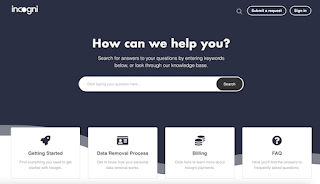GOOGLE WILL LAUNCH SOME TOOLS TO IDENTIFY IMAGES CREATED BY IA
GOOGLE WILL LAUNCH SOME TOOLS TO IDENTIFY IMAGES CREATED BY IA
During its yearly Google I/O conference, the giant Californian company unveiled two brand-new features for identifying photos produced from all pieces by artificial intelligence. This initiative is in line with the European Union's desire to make these detection tools mandatory.
Many online users were fooled by the unrealistic realism that is demonstrated by artificially generated intelligence, causing them to fall into the panel. Midway, Dall-E, Craiyon, or even Bing Image Creator, the IA are always working to create fake images and perhaps trick online users.
Google made the decision to take action and announced the launch of two new tools to identify fake photographs during its annual developers' conference, Google I/O, held last week. a campaign aimed at influencing the European Union's future regulation of artificial intelligence.
There are two additional alternatives in Google Images.
The Mountain View team should quickly provide a first feature that makes the source of the results displayed in Google Pictures visible. To more easily track this image's provenance, an "about this image" reference should be present.
A reverse search function that has been around for a while, like the services offered by TinEye, for instance. Be aware that Google Images and Google Lens already offered this feature, but the goal here is to make it more widely available.
The second action taken by Google is the addition of a label reading "AI-Generated with Google" to any photographs created by its AI as well as that of its rivals Midjourney, Dall-E, Craiyon, or even Microsoft's Bing Image Creator.
A similar Bing-like markup has also been implemented by Microsoft, and TikTok asks users to mark any publications they deem to be "synthetic," "false," "real," or "modified." Other social media platforms like Facebook and Twitter have not yet expressed their opinions on the matter, but the circumstances may very well do so.
The creation of images automatically can be entertaining and makes creativity available with just one click, without the need for Photoshop expertise. But it can also be used for less honorable purposes, as in the case of this fake photograph of an elderly man being hung during a protest that went viral and fueled debate about police aggression in France.
Midjourney, for instance, was forced to shut down free access to its services in March of last year due to the growth of access to its IA, including for disinformation purposes. Even though the issue appears to have only partially been resolved, this incident has highlighted the need for better IA moderation in the European agenda.
In fact, the European Parliament has just adopted the European Artificial Intelligence Regulation and has been forced to include the new issues surrounding IA in the process. The draft is scheduled for a final vote in June, and the European Union hopes that it will go into effect early the following year to set an example for the IA's regulatory framework.





